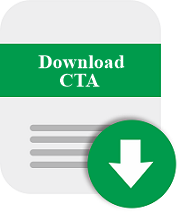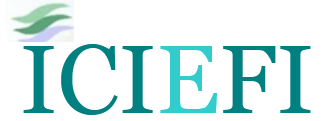Islamic Bank and Monetary Policy: The Case of Indonesia
Abstract
Islamic bank in Indonesia exists side by side with its conventional counterpart within dual banking system, while the central bank aims to achieve price stability in the economy using conventional and Islamic monetary instruments within dual monetary system. This posits a very unique environment for Islamic bank. This research aims to examine the role of Islamic bank in monetary policy transmission mechanism using Granger Causality and Autoregressive Distributed Lag (ARDL). The balance sheet components of deposit and financing were hypothesized to function in monetary transmission process within bank financing channel. Granger causality revealed that Islamic interbank overnight rate granger causes Islamic deposit and financing. Islamic deposit and financing granger cause industrial production index. Industrial production index granger cause inflation, Islamic deposit, and Islamic interbank overnight rate. Islamic deposit and inflation granger cause Islamic interbank overnight rate. The ARDL results showed that there were cointegrating relationships in the output and inflation model. Long-term convergence could be reached to correct deviations in output and inflation by way of Islamic banks’ deposit and financing. However, short-term influence is contributed only by Islamic banks’ deposit to output. Islamic banks’ deposit does not contribute in the short-run to inflation. Islamic banks’ financing does not have short-term relationship with output and inflation. Hence, there is a declining effectiveness of Islamic banks’ financing contribution to the economy.
Keywords
Full Text:
PDFReferences
Akalpler, E., & Duhok, D. (2018). Does Monetary Policy Affect Economic Growth: Evidence from Malaysia. Journal of Economic and Administrative Sciences, 34(1), 2-20.
Akinsola, F. A., & Odhiambo, N. M. (2017). Inflation and Economic Growth: A Review of the International Literature. Comparative Economic Research, 20(3), 41-56.
Alaro, A.-R. A., & Hakeem, M. (2011). Financial Engineering and Financial Stability: The Role of Islamic Financial System. Journal of Islamic Economics, Banking, and Finance, 7(1), 25-38.
Ascarya. (2012). Transmission Channel and Effectiveness of Dual Monetary Policy in Indonesia. Bulletin of Monetary Economics and Banking, 14(3), 269-298.
Ascarya. (2014). Monetary Policy Transmission Mechanism Under Dual Financial System in Indonesia: Interest-Ptofit Channel. International Journal of Economics, Management, and Accounting, 22(1), 1-32.
Asutay, M., & Ergec, E. H. (2013). Searching for the Nexus between Money, Deposits, and Loans (Financing) in Malaysian and Turkish Islamic and Conventional Banking: A Comparative Analysis (2007-2013). Afro Eurasian Studies, 12(1), 72-90.
Brooks, C. (2014). Introductory Econometrics for Finance. Cambridge: Cambridge University Press.
Dimitrijevic, B., & Lovre, I. (2013). Essay on Monetary Policy and Economic Growth. Journal of Central Banking Theory and Practice, 2(1), 111-138.
Enders, W. (2014). Applied Econometrics Time Series. University of Alabama: Wiley.
Fikri, R. J. (2018). Monetary Transmission Mechanism Under Dual Financial System in Indonesia: Credit-Financing Channel. Journal of Islamic Monetary Economics and Finance, 4(2), 251-278.
Gujarati, D. N. (2016). Basic Econometrics. McGraw-Hill Europe: UK Ed.
Herianingrum, S., & Syapriatama, I. (2016, January). Dual Monetary System and Macroeconomic Performance in Indonesia. Al-Iqtishad: Jurnal Ilmu Ekonomi Syariah (Journal of Islamic Economics), 8(1), 65-80.
Kallianiotis, I. N. (2015). Economic Crises and the Substitution of Fiscal Policy by Monetary Policy. International Journal of Economics and Financial Issues, 5(1), 44-68.
Kassim, S. H., & Majid, M. S. (2008). The ROle of Bank Lending in the Monetary Transmission Process of a Developing Economy: Evidence from Malaysia. Savings and Development, 4, 301-331.
Kassim, S. H., Majid, M. S., & Yusof, R. M. (2009). Impact of Monetary Policy Shocks on the Conventional and Islamic Banks in a Dual Banking System: Evidence from Malaysia. Journal of Economic Cooperation and Development, 30(1), 41-58.
Miah, D. M., & Uddin, H. (2017). Efficiency and Stability: A Comparative Study Between Islamic and Conventional Banks in GCC Countries. Future Business Journal, 3(2), 172-185.
Mishkin, F. S. (1996). The CHannels of Monetary Transmission: Lessons for Monetary Policy. Cambridge, Massachusetts: NBER Working Paper No. 5464.
Octaviani, I., & Arif, M. N. (2018). Islamic Monetary Policy and Its Impact on Real Sector. Trikonomika, 17(2), 43-48.
Pesaran, M., & Shin, Y. (1998). An Autoregressive Distributed Lag Modelling Approach to Cointegration Analysis. Symposium at the Centennial of Ragnar Frisch. Oslo: The NOrwegian Academy of Science and Letters.
Rafay, A., & Farid, S. (2019). Islamic Banking System: A Credit Channel of Monetary Policy-Evidence from an Emerging Economy. Economic Research, 32(1), 742-754.
Rashid, A., Yousaf, S., & Khaleequzzaman, M. (2017). Does Islamic Banking Really Strengthen Financial Stability? Empirical Evidence from Pakistan. International Journal of Islamic and Middle Eastern Finance and Management, 10(2), 130-148.
Said, F. F., & Ismail, A. G. (2007). How Does The Changes in Monetary Policy Affect Lending Behaviour of Islamic Banking in Malaysia? Journal Ekonomi Pembangunan: Kajian Ekonomi Negara Berkembang, 12(3), 163-177.
Setiawan, R. Y., & Karsinah. (2016). Mekanisme Transmisi Kebijakan Moneter Dalam Mempengaruhi Inflasi dan Pertumbuhan Ekonomi di Indonesia. Economics Development Analysis Journal, 5(4), 460-474.
Studenmund, A. H. (2017). Using Econometrics: A Practical Guide (7th ed.). Pearson.
Sukmana, R., & Ascarya. (2010). The Role of Islamic Stock Market in the Monetary Transmission Process in the Indonesian Economy . Insaniah-IRTI International Conference (pp. 1-18). Langkawi: IRTI.
Sukmana, R., & Kassim, S. H. (2010). Roles of the islamic Banks in the Monetary Transmission Process in Malaysia. International Journal of Islamic and Middle-Eastern Finance and Management, 3(1), 7-19.
Taylor, J. B. (2019). Inflation Targeting in High Inflation Emerging Economies: Lessons About Rules and Instruments. Journal of Applied Economics, 22(1), 103-116.
Twinoburyo, E. N., & Odhiambo, N. M. (2018). Monetary Policy and Economic Growth: A Review of International Literature. Journal of Central Banking Theory and Practice, 2, 123-137.
Walsh, C. E. (2017). Monetary Theory and Policy. Massachusetts: Massachusetts Institute of Technology.
Widodo, A. (2017). Evaluating the Effectiveness of Dual Monetary Policy in Promoting Price Stability in Indonesia. Iqtishadia: Jurnal Kajian Ekonomi dan Bisnis Islam, 10(2), 210-233.
Wisandani, I., Iswati, S., & Ismal, R. (2017). The Monetary Policy in Indonesia: in the Perspective of Islamic Economics. International Journal of Nusantara Islam, 5(1), 59-74.
Yungucu, B., & Saiti, B. (2016). The Effects of Monetary Policy on the Islamic FInancial Services Industry. Qualitative Research in Financial Markets, 8(3), 218-228.
Yusof, R. M., Wosabi, M. A., & Majid, M. S. (2009). Monetary Policy Shocks in a Dual Banking System: Empirical Evidence from Malaysia and Bahrain. Journal of Economic Cooperaation and Development, 30(2), 1-26.
Zaheer, S., Ongena, S., & Wijnbergen, S. J. (2013). The Transmission of Monetary Policy Through Conventional and Islamic Banks. Journal of Central Banking, 9(4), 175-224.
Zulkhibri, M., & Sukmana, R. (2017). FInancing Channel and Monetary Policy in a Dual Banking System: Evidence from Islamic Banks in Indonesia. Economic Notes, 46(1), 117-143.
DOI: https://doi.org/10.18196/ijief.2124
Refbacks
- There are currently no refbacks.
Copyright (c) 2020 International Journal of Islamic Economics and Finance (IJIEF)

This work is licensed under a Creative Commons Attribution-ShareAlike 4.0 International License.
International Journal of Islamic Economics and Finance (IJIEF)
International Program for Islamic Economics and Finance
Department of Economics
Faculty of Economics and Business
Universitas Muhammadiyah Yogyakarta
Pascasarjana Building, Ground Floor
Jl. Brawijaya (Ringroad Selatan), Kasihan, Bantul
D.I. Yogyakarta 55183, INDONESIA
Official email: ijief@umy.ac.id












1.jpg)